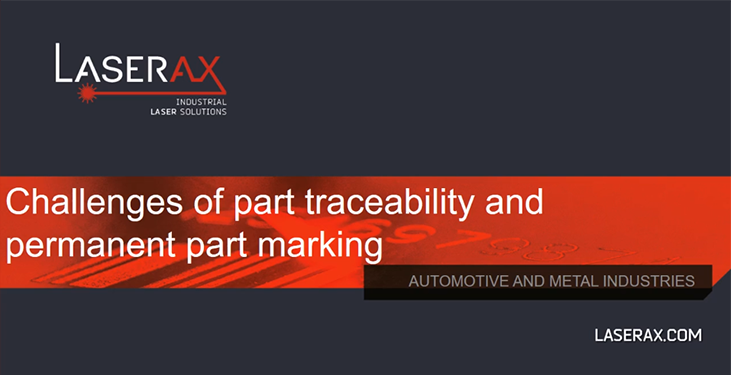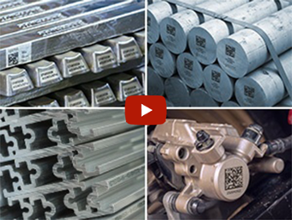Automotive Part Marking Technologies - Which One to Choose?
If you are struggling to find a marking method for traceability, or simply for process improvement, you are not the only one.

Lasers were first used in industrial applications by Western Electric in 1965 (1). Since then, lasers have been adopted in many other industrial applications. Laserax has become a leader in permanent laser marking. Check our webcast on the Challenges of Part Traceability and Permanent Laser Marking.
High-power lasers are used to mark identifiers on metals, such as steel, stainless steel, copper, lead, aluminum and many others. Some might consider laser marking technologies as a top-tier industrial technology. Although it is widely used in the aerospace, defense and nuclear industries, laser direct part marking (LDPM) is common to the automotive industry, marine sector, power sports and other industries, especially for high integrity parts or safety critical parts.
Permanent laser marking has gained a lot of traction throughout the value chain in the aluminum industry. From sows to billets to cold and hot rolls to extrusions or die castings, the information etched on the products by lasers follows the products so that all stakeholders downstream of the marking operation can use it to their own advantages.
Let’s drill down into the die casting industry for example. Typically, information that might be interesting to convey could include a part’s shot or injection profiles or identification, metal alloy identification, heat treatment or other test results.
Given that laser markers can be used to etch information directly onto a product, we have to use an encoding mechanism able to convey the largest amount of information in the most efficient manner possible. We feel strongly that a Data Matrix Code (DMC) is the way to go. For more information about DMC download our ebook on Industrial Traceability - How barcodes work.
Going back to LDPM, in order for the information to be easily readable (both to the human eye and artificial vision systems, such as scanners, cameras or other imagers) we need a good contrast between the background and markings. This is achieved by engraving a dark marking on a pale background.
On aluminum parts, the pale background is achieved by creating little valleys that vary between 0 and 10 µm. Dark marking is achieved by creating crevices that vary between 0 and 80 µm (more on the laser marking mechanisms in this post).
Laserax has spared no efforts in understanding the impacts of factors, such as marking speed, part temperature, alloying, and thermal and surface treatments, on the legibility of laser markings on aluminum parts. If you would like to learn more about permanent laser markings, check this webcast: Challenges of Part Traceability and Permanent Part Marking.
Click the image below to watch the webcast

Sources: